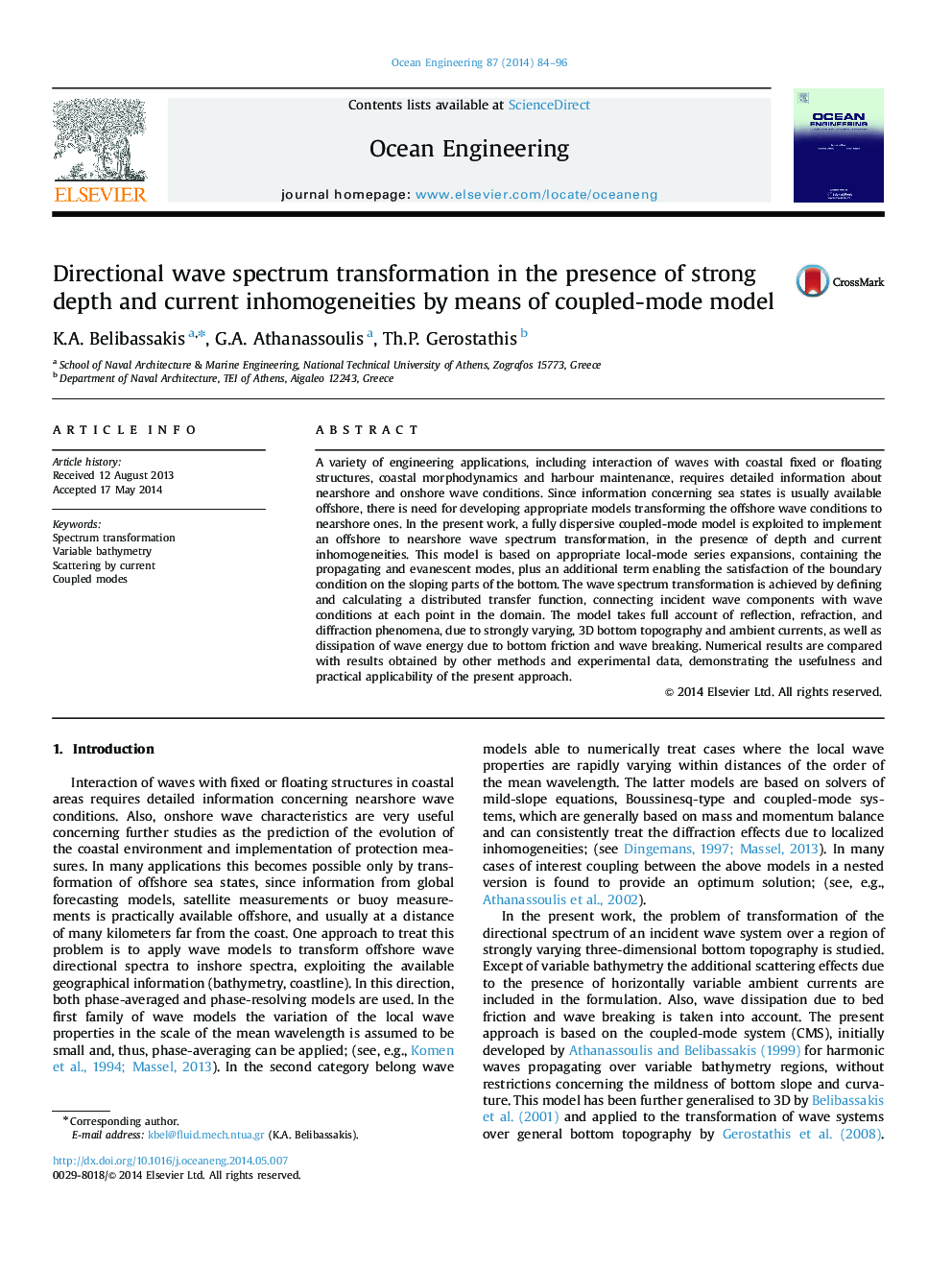| Article ID | Journal | Published Year | Pages | File Type |
|---|---|---|---|---|
| 1725585 | Ocean Engineering | 2014 | 13 Pages |
Abstract
A variety of engineering applications, including interaction of waves with coastal fixed or floating structures, coastal morphodynamics and harbour maintenance, requires detailed information about nearshore and onshore wave conditions. Since information concerning sea states is usually available offshore, there is need for developing appropriate models transforming the offshore wave conditions to nearshore ones. In the present work, a fully dispersive coupled-mode model is exploited to implement an offshore to nearshore wave spectrum transformation, in the presence of depth and current inhomogeneities. This model is based on appropriate local-mode series expansions, containing the propagating and evanescent modes, plus an additional term enabling the satisfaction of the boundary condition on the sloping parts of the bottom. The wave spectrum transformation is achieved by defining and calculating a distributed transfer function, connecting incident wave components with wave conditions at each point in the domain. The model takes full account of reflection, refraction, and diffraction phenomena, due to strongly varying, 3D bottom topography and ambient currents, as well as dissipation of wave energy due to bottom friction and wave breaking. Numerical results are compared with results obtained by other methods and experimental data, demonstrating the usefulness and practical applicability of the present approach.
Keywords
Related Topics
Physical Sciences and Engineering
Engineering
Ocean Engineering
Authors
K.A. Belibassakis, G.A. Athanassoulis, Th.P. Gerostathis,
